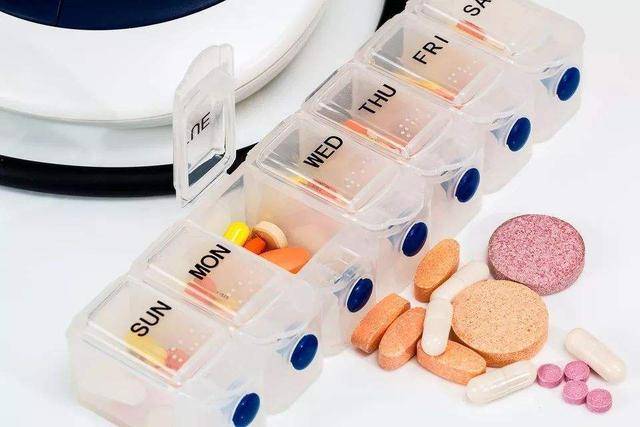Hypertension is a very common chronic disease. Previously, it was believed that only the elderly could get this disease and young people wouldn’t. But as the number of young people with this disease increases, everyone realizes that hypertension is closely related to not paying enough attention to one’s own health.
We know that for those with hypertension, the most important thing is to reduce salt intake. Sodium in salt can cause blood vessels to contract, leading to increased blood volume and consequently high blood pressure. Therefore, hypertension patients need to remember to eat lightly.
When it comes to vegetables and fruits, everyone thinks there are no restrictions. Vegetables and fruits are rich in nutrients, containing a variety of vitamins and dietary fiber which are beneficial for health. However, for hypertension patients, there are some fruits that should be avoided as they may stimulate blood pressure.
Let me start by talking about a fruit that hypertension patients must avoid when taking medication! That fruit is grapefruit!
Why shouldn’t hypertension patients eat grapefruit when taking medication?
Grapefruit contains components that can affect the breakdown of antihypertensive medications. Approximately 45 types of antihypertensive drugs may react with the components in grapefruit, increasing the risk of adverse reactions and even causing significant blood pressure fluctuations, which is not good for the condition. Grapefruit contains naringin, bergamottin, and other active ingredients that inhibit liver enzyme activity, slowing down the metabolism of drugs in the liver. As hypertension patients need to take medication daily, this inadvertently prolongs drug metabolism time, effectively increasing drug dosage.
Some hypertension patients experience a sudden drop in blood pressure, dizziness, palpitations, weakness, and other symptoms when eating grapefruit while taking medication, which may lead to accidents.
Moreover, the effect of grapefruit on blood pressure lasts for a relatively long time after consumption, with the maximum impact within 24 hours and a duration of 3 to 7 days.
Therefore, hypertension patients must avoid eating grapefruit during medication. If grapefruit is consumed accidentally, careful monitoring, reduction of antihypertensive medication, active blood pressure monitoring, and immediate medical attention in case of discomfort are advised.
In addition to avoiding grapefruit during medication, hypertension patients should also try to consume the following two fruits less frequently:
1. Durian
While durian may be extremely loved by some people for its taste, others can’t stand even its smell. Durian is highly nutritious but not suitable for consumption by hypertension patients. This is because durian has a high sodium content and regular consumption by hypertension patients can lead to unstable blood pressure and difficulty in control.
2. Chilled Watermelon
During the hot summer months, people enjoy eating chilled watermelon to cool down. However, chilled watermelon is not suitable for hypertension patients due to their sensitivity to temperature fluctuations. Chilled watermelon has a low temperature which can cause blood vessel constriction. Moreover, with its high water content and low satiety, overeating may inadvertently increase blood circulation pressure, leading to unstable blood pressure.
What fruits and vegetables should hypertension patients eat?
1. Consistent Vegetable Intake
An appropriate daily intake of vegetables is about a pound, with variety in types. It is recommended to consume three to four types of vegetables daily, with over half being dark or green vegetables. Cooking methods should be mild, with less salt and oil.
2. Moderate Fruit Consumption
Consuming around 200 grams of fruits per day is suitable, not exceeding 400 grams. It is best to consume two or more varieties of fruits daily, splitting the intake between morning and afternoon, with around 100 grams each time. It’s advisable to eat fruits an hour after meals, focusing on whole fruits instead of juice or dried fruits.
3. Ensure Fresh Ingredients Selection
When selecting ingredients, hypertension patients should opt for fresh products over processed, frozen, or canned ones. Pickled food like pickles should also be avoided. It’s recommended to consume fresh vegetables and fruits more, with an emphasis on lean meats such as fish and poultry instead of red meat.
Furthermore, it is advised that hypertension patients consume quinoa regularly. Quinoa is rich in Omega-3 which is beneficial for reducing blood viscosity and cholesterol levels, making it beneficial for managing hypertension, hyperlipidemia, and hyperglycemia. In addition to incorporating quinoa into their diet, hypertension patients can also drink teas like common blue vervain that naturally cleanse the blood and soften blood vessels.
In conclusion, balanced nutrition is crucial for hypertension patients. Apart from observing dietary restrictions, having regular meal times, controlling portions, incorporating lean meats, avoiding excessive fats and salt are necessary. Eating slowly, monitoring blood pressure regularly, following antihypertensive drug prescriptions diligently, refraining from self-discontinuation of medication, engaging in moderate exercise, maintaining a positive attitude, and adhering to these practices are essential for stabilizing blood pressure.


